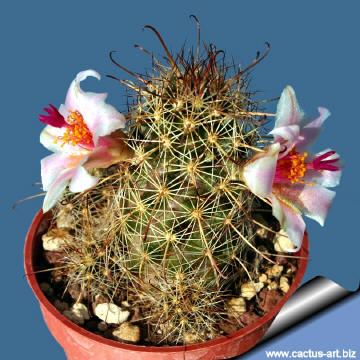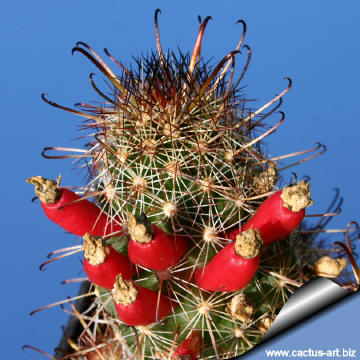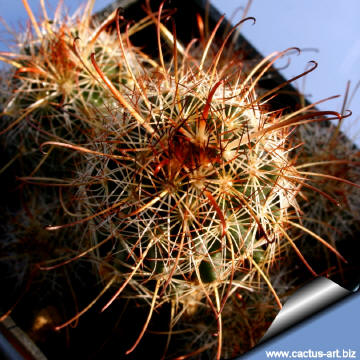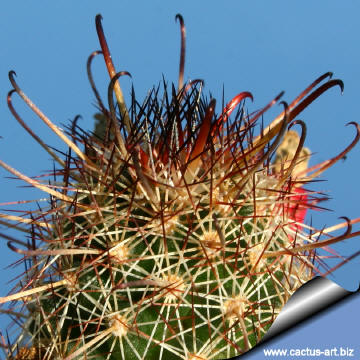-
x
Descrizione
La particolarità di questa specie sono i numerosi rami che radicano autonomanente. Questi si affrancano presto dalla pianta madre con la quale sono connessi in maniera effimera. In poco tempo si forma una piccola colonia di piante indipendenti. Family: Cactaceae (Cactus Family) Scientific name: Mammillaria thornberi Orcutt Origin: These cacti are typically found in Arizona and Mexico (Sonora) Habitat: Sonoran desert scrub, valley floors, silty or sandy soils; 10-600 m. . It will grow only where it is shaded from the full sun. This can be under shrubs and frequently at the base of Opuntias, where the germinating seeds find added protection provided by the numerous fallen opuntia joints. Common Names include: Thornber's Fishhook Cactus, Thornber's nipple cactus, clustered Fishhook Cactus, clustered pincushion, slender pincushion, organ pipe. Etymology: Named after Prof. John Thornber (1872-1962) US- American botanist at the university of Arizona Conservation status: Listed in CITES appendix 2.
The epithet fasciculata was long misapplied to Mammillaria thornberi. It correctly pertains to Echinocereus fasciculatus (Engelmann) L. D. Benson.
| |
| Description: M. thornberi is a small cactus with slender stems, that likes to cluster from the base, forming nice clumps or families. The particularity of this species is that every branch will form an independent root system, the connections of which to the rest of clone are ephemeral, resulting in dense clumps of independently rooted stems. The subspecies 'thornberi' has thicker stems, 2,5 cm wide and tapered at the base, with 15-20 radial spines. The radial spines are not distinctly pubescent. It o,ccurs in Arizona and Sonora. | |
| Cultivation: This plant blooms easily and needs lots of light. Use a pot with good drainage and a very porous mineral-based potting mix. Potted plants are quite wet-sensitive, especially in light of its small root system. Water sparingly during the growing season, letting soil dry in between to prevent root rot. Keep very dry in winter. Feed with a high potassium fertilizer in summer. Usually it is recommended to overwinter this plant in a bright and warm greenhouse at at least 8-10° C , but it has proved to be quite frost resistant (if kept dry, it is hardy as low as -7° C). A resting period in winter and strong light are necessary so that it can flower properly. Plants will offset readily, and dense clumps can be produced in a very few years. | |

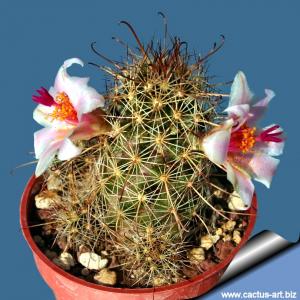
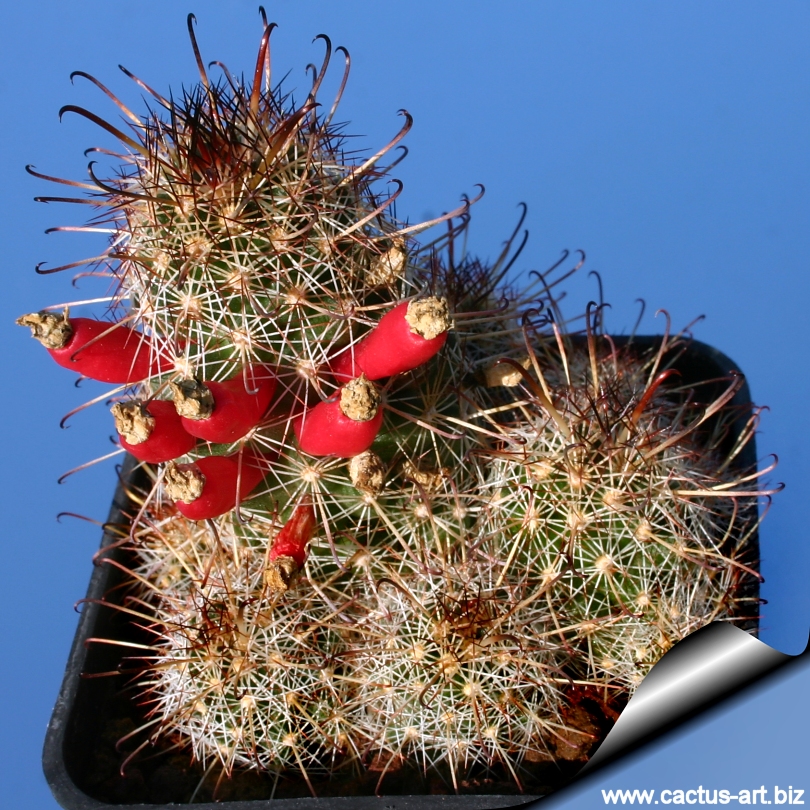 Mammillaria thornberi
Mammillaria thornberi 